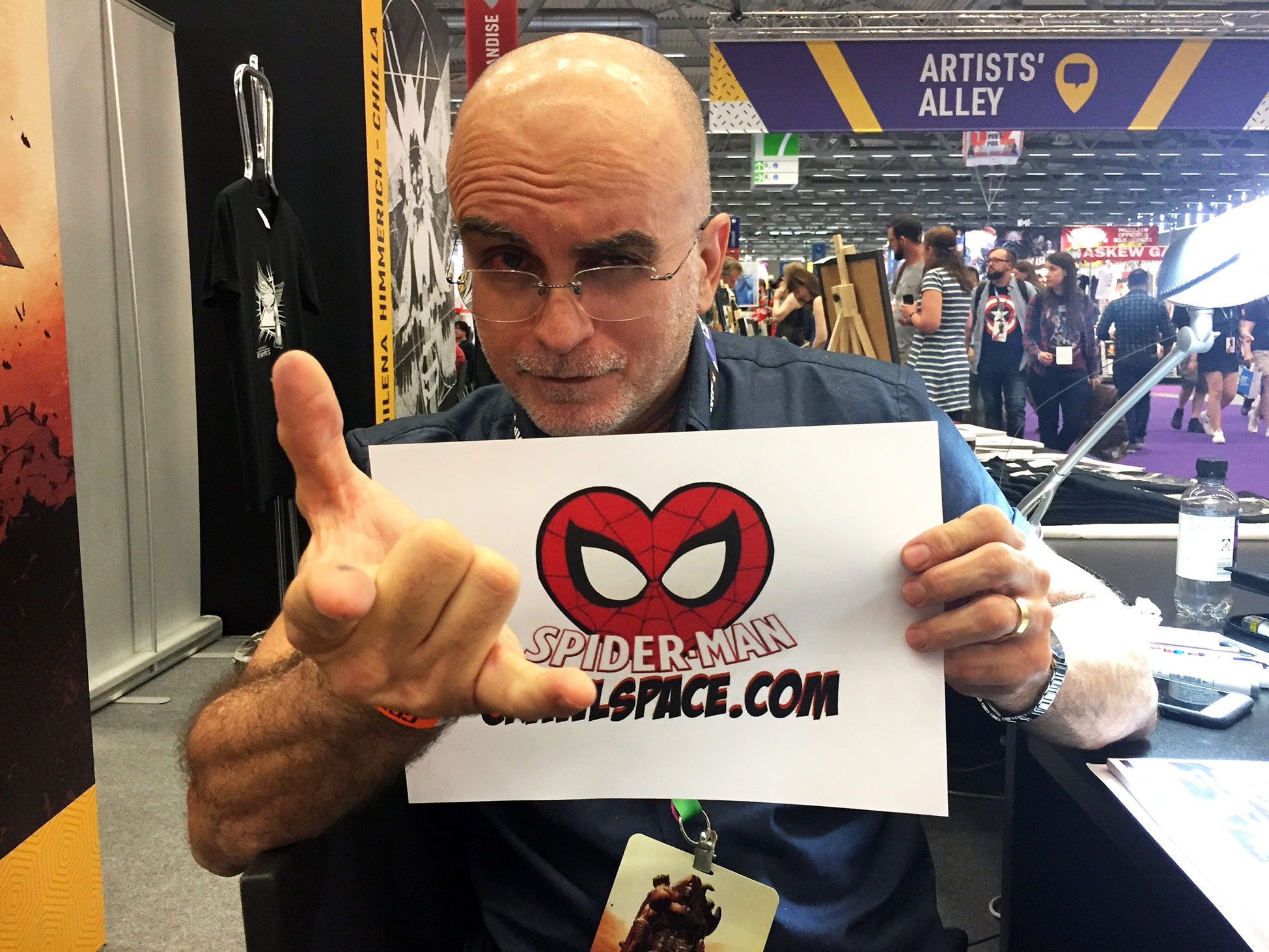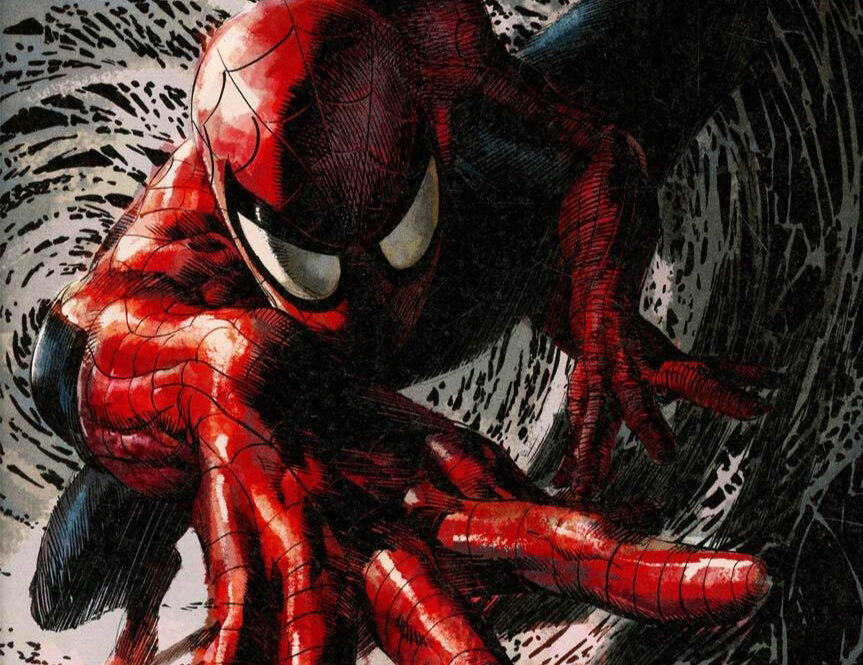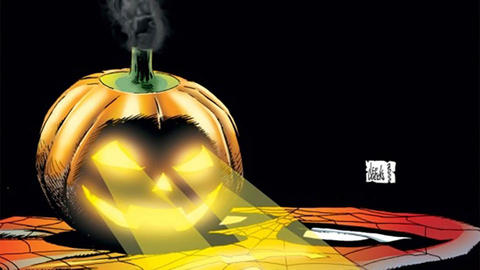Hello, Crawlspacers – good to be back!
In case there are some of you out there wondering how and why the hell I took so long to bring my column back to life in this wonderful and unique virtual platform, indulge me in a short apology: moving from one country to another is not an easy feat. The period of adaptation can take a while and when it comes down to rebuilding a new life, developing new routines, meeting new people and learning the ropes on local cultural behavior, finding a new job, learning baseball rules, trying to figure it out why preparing a single play in American football takes so darn long, and my “worst favorite”: adapting to the Imperial System: miles, gallons, inches ounces, and feet! Whose feet are those?! There are different foot sizes, you know?
Anyhoo, but there’s also a comfort in finally being in the land where our most beloved fictional character was created. I’m rebuilding my comic book collection from scratch with all the Marvel (and some DC’s) Omnibuses, Masterworks, Epic Collections, trade paperbacks, special cover issues, some books, and Blu-rays. It’s cool to own original issues, after growing up with and collecting Brazilian editions that published the material made here. Save some very special editions, most of the thousands of comics collected in Brazil will be gladly given to my godsons and donated to libraries; then my mother can finally sigh in relief from seeing those damn comic book boxes going away.
Another perk of starting fresh in The U.S. of A. is having the opportunity to go to my second serious (and first American) Comic-Con where I had the opportunity to talk in great lengths and get the autographs of Jim Shooter, Alex Saviuk, and others, buy more comics, talk briefly to Frank Miller and get his autograph, meet people from the same tribe that never thought that existed until the moment they pay a compliment to my Spidey and Batman t-shirt… Shame neither J. Michael Straczynski nor John Romita Jr. (my favorite comic book artist ever) were there, but I still hope to meet them in person one day at a convention in this brave new world.
My first one was very special too, though: and it took place in the very city I used to live in – Köln (Cologne), in Germany in 2019 – The 1st CCXP – Comic Con Experience. What a treat! Artists, writers, actors, brands, news, and an opportunity to get a first-hand experience alongside my own kind in European territory. I hadn’t yet read Brian Azzarello’s 100 Bullets, so I kind of felt bad afterward for losing the opportunity to ask him about the first great (and real) North American mystery: The Roanoke Colony and how he tied it to his comic; my copy of Superman – For Tomorrow was (and still is) buried in one of my boxes at my Mom’s, just like David Finch‘s copies of New Avengers and Cyberforce; so I just shook their hands and told them how great their work was. And everything people wanted from David Lloyd was a V‘s sketch (from V For Vendetta); not me. He even offered me one though, being in automatic V-sketching mode, but I wanted to talk more about his work prior to and after it – he was more than happy to oblige and didn’t hesitate when I asked for a head sketch from the officer who marked me for life when I first read the “Nightingale” tale written by Garth Ennis in the War Stories series (from DC Vertigo). Besides being Ennis’ favorite of the lot, you don’t know what a WWII comic book is if you haven’t read that.
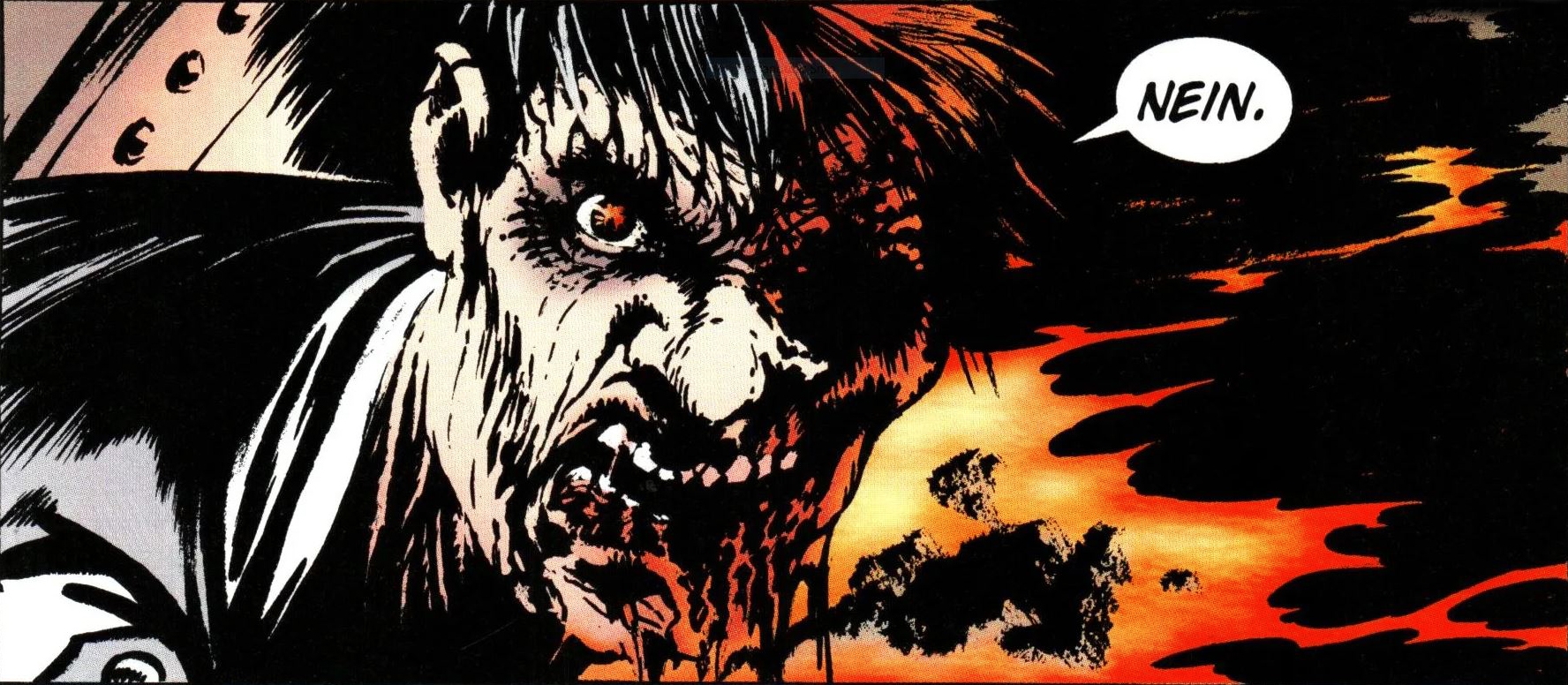
Ivan Reis was also there – a renowned Brazilian artist whose style and attention to widescreen action rivals just a few in the field made fame with Geoff Johns in an astounding and unforgettable Green Lantern run. But that was not the countryman I was looking for.
Being this the best Spider-Man fan website ever conceived – kudos to our fearless editor Brad Douglas for his patience and understanding -, I couldn’t deliver anything less than special. Especially now, that this website has reached its quarter-century anniversary. The stars have aligned, and now is the right moment to bring to light an interview from Germany with one of the best Spider-Man artists in the character’s history: Mike Deodato Jr.
But first, some background info on the man and his career:
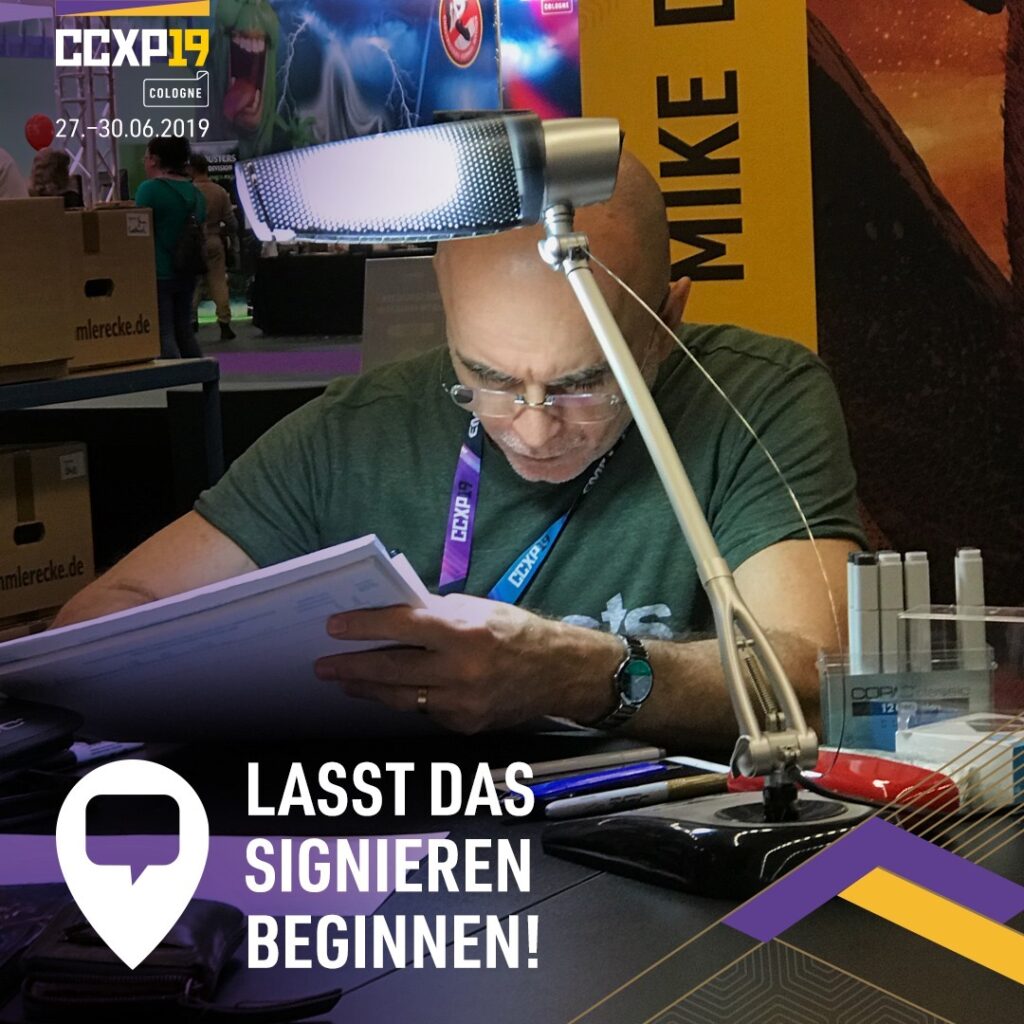
Deodato Taumaturgo Borges Filho had the sequential art infused in his blood by his own father, Deodato Taumaturgo Borges – a reputable designer and journalist in love with the 9th art. By the age of 15, Deodato Filho – this last name being the equivalent of ‘Jr.’ (or ‘The Second’) in the Portuguese language – was already penciling with some talent, willing to follow his father’s footsteps, like John Romita Jr. After tasting the reality of seeing his first printed works in fanzines, he aimed higher and decided he would never set his life apart from the sequential art form. The young artist with ink in his eyes decided to drop college and pledged allegiance to the comic book gods.
In 1986, after participating in the XIII International Salon of Angoulême in France, his works got printed on a new continent. Not long enough, others noticed his talent and he found work for publishers such as Innovation Comics, in titles such as Lost in Space, Quantum Leap, and Beauty and the Beast. The escalation was inevitable. For Eclipse Comics, he tasted a huge disappointment by working on the Miracleman Triumphant miniseries – then sadly unpublished due to the company’s filing for bankruptcy.
In 1994, already self-rebaptized as “Mike” Deodato, he had already landed on the major North American publishers willing to not take any prisoners; in his first stint for DC Comics with Wonder Woman, he could display the Amazon in more provocative ways (remember, the man knows the Brazilian standard for feminine beauty), made the title a hit. Noticing the need to develop an equivalent character of their own, Image Comics drafted him to draw their super-heroine Glory in the following year, when he finally dropped the hammer down at Marvel and beautifully illustrated one of his favorite works: Thor – Worldengine (written by Warren Ellis).
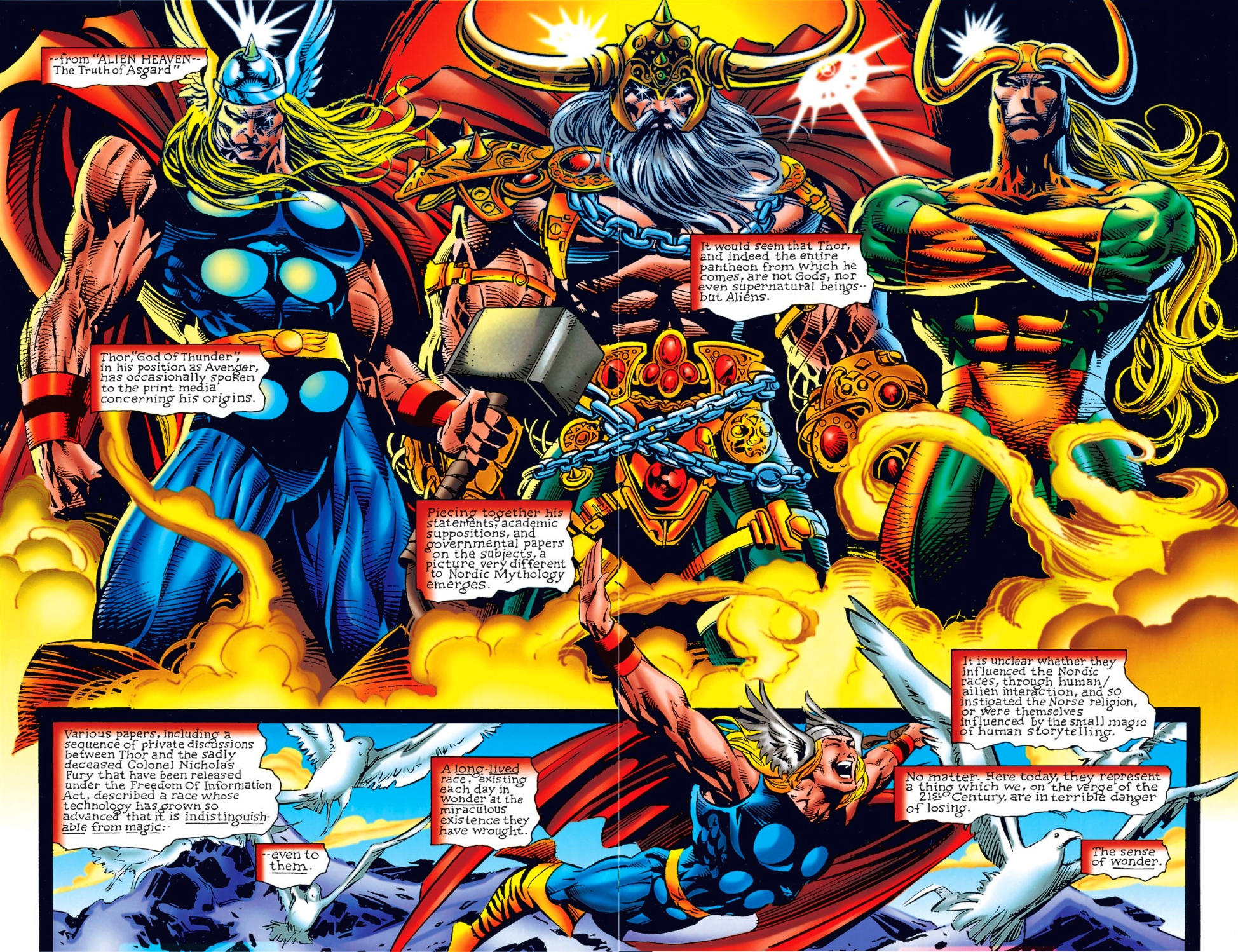
Marvel then would become the American publisher that published Deodato’s work in a variety of titles. Among the main series designed by him for the publisher are The Avengers; Dark Avengers, New Avengers, The Amazing Spider-Man (from Aug. 2004 to Mar. 2006), Wolverine, Hulk, and Elektra, plus miniseries like Original Sin. Another highlight was a new partnership with Warren Ellis on the Thunderbolts title, about a group of villains posing as heroes. With his dynamic style, energy, camera positioning, body weight and muscular sense, knowledge of facial expression, attention to light sources and shadows, with impeccable visual composition, Mike Deodato is considered one of the best artists in the mainstream comic book industry, and possibly the one Brazilian comic book artist who has worked for all the publishers in the U.S. and knows the industry like few.
Especially for being part of the bunch of the up-and-coming wave of artists from the ’90s: the ones eager to reshape superhero comics for the 21st century – some of them doing their best to emulate the Image Comics style into the “big two” (Marvel & DC). But the over-stylized, hyper-muscular era could only last so long; it became saturated with more of the same. That’s why some of the most famous artists from that era didn’t actually make it to the 21st century. He is part of a select group of artists that survived that era and went above and beyond, due to his focus and flexibility in his art to evolve. His effort paid off – Marvel honored him with a book (in horizontal coffee table format) to pay homage to his work and art in the company at the peak of his Marvel phase: The Marvel Art of Mike Deodato Jr.:
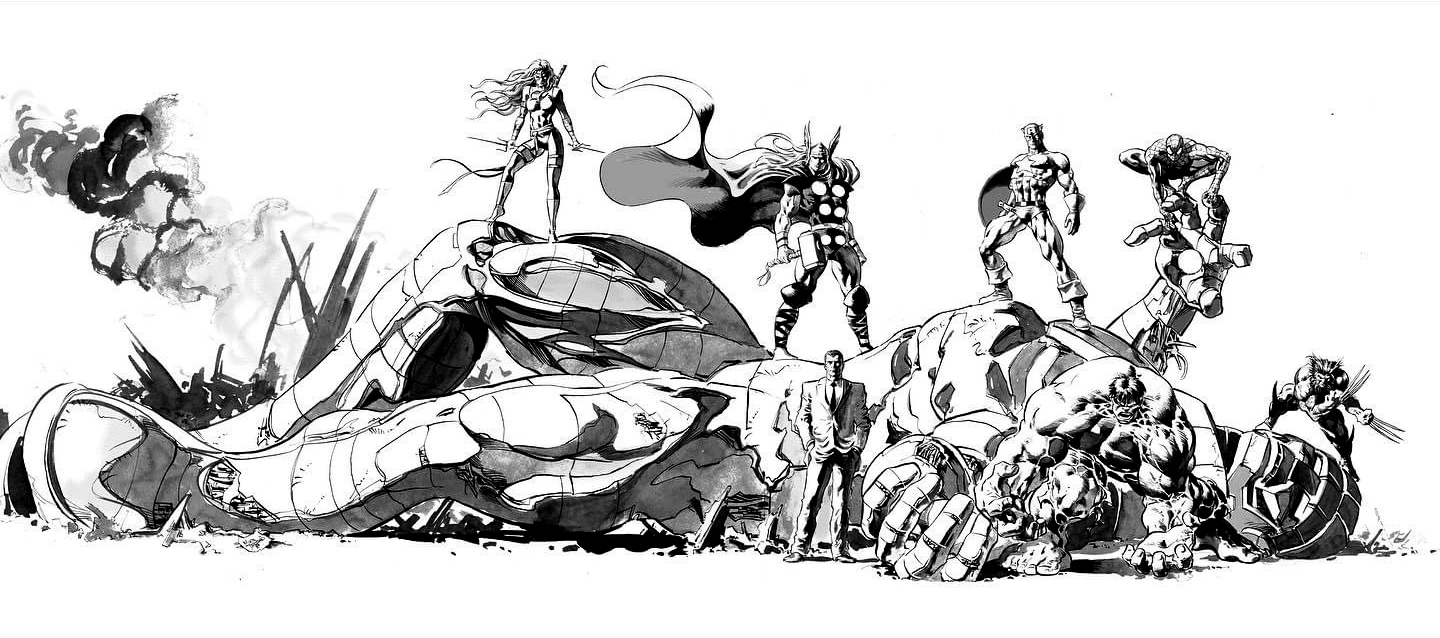
In 2022, he became an Eisner Winner as an artist for Not All Robots, as the Best Humor Publication of the Year, written by Mark Russell. The title was published by AWA (Artists, Writers & Artisans founded in 2019), co-founded by Axel Alonso and Bill Jemas. It was there that Deodato reunited with J. Michael Straczynski in 2019 to release a new comic book universe called The Resistance. The author’s unbounded new venture into superheroes – and villains – with new paradigms from the 21st century, directly affecting (and being affected by) the world we live in.
Now, in 2023, he’s back to the legacy superhero realm with a new contract in DC Comics, firing all the cylinders with a new Flash #1 written by Si Spurrier. The relaunched title promises a new look at sci-fi terror in hyper speed.
The interview couldn’t have happened in a better environment – Germany’s first big Comic-Con event: 2019’s CCXP on June 29th, 2019 at the Artists’ Alley. Quite the scenario for two Brazilians to have a serious talk about comics and Spider-Man. During the conversation, Deodato excelled in kindness, being highly accessible and kind to fans from different countries, who approached the artist eager to greet him and get a sketch; all of them paying him the highest of compliments. There’s no doubt in acknowledging he’s now a giant in the industry. All the aforementioned artists – his peers – already treating him as one, and deservingly so: just like many Americans and English comic artists and writers, Deodato is a comic book geek who is well-versed in the giants of the visual comic book art form – and more importantly: he knows how the industry works. And just like one of his Idols – Neal Adams – he doesn’t mince words and knows the exact difference between comic illustration and comic book storytelling. He loves the media, the Superhero concept (like many Brazilians too), and has no wish to stop anytime soon.
As we approach the second part of JMS’ run in this column, nothing better to learn/know more about the Brazilian artist who left an indelible mark not only in the Webhead’s history and the Marvel Universe but also in the medium’s modern history. Not a privilege easily acquired for many artists in the field and in the mainstream industry.
Without further ado…

INTERVIEW TRANSCRIPTION:
André Santana: When you got into Marvel, where did you start out? Avengers?
Mike Deodato: When I got into Marvel, Bob Harras was writing the title and he was also E-i-C; things were a little bit mixed up in those times. I don’t know if it was him; I think it was Tom DeFalco.
DeFalco preceded Harras in the ’90s. Most of the titles were X-branded; by the end of the nineties, if I’m not mistaken, I saw one of your first covers – Avengers #400 (May 1996).
I started with Avengers #380, replacing Steve Epting I think. I stayed in Marvel until the end of ’98 when my contract expired, but my art was already crap because I was working too much and Marvel didn’t want to renew it. Then I tried Valiant – which then fought Marvel for my contract. But in the end, nobody wanted me anymore. So I ended up doing some work for Chaos! – This phase back then represented my journey from top to bottom, due to my decision to work too much – it was wrong. A learning experience.
I also remember you did Elektra with Peter Milligan, before your exit.
That was also during my first period with Marvel, from 95′-98′, I did Elektra, Hulk, and Thor – Worldengine (Thor #491-494 – 1995) – those four issues were fantastic. Shame they didn´t keep that storyline of Thor as an alien… I also think I did Hercules vs. Hulk. Many things were done in a short timeframe. There was also Deodato Studios – actually a place that didn’t exist physically, just a group of artists that worked together under that name for a while, but in the end, it didn’t work out.
Then I think I returned to Marvel, I think in the early 2000s.
When Joe Quesada was already E-i-C.
Exactly. I did an X-Men Unlimited issue, eleven pages for (a) Nightcrawler issue with a new penciling style, aiming to do the best work in my life; everybody praised it but they couldn’t use it because back then they hired an inker and he had to work on the issue. I said “No problem” and redid the art for the inker and sent it back. They loved it so much that they decided to put me on an X-title, but for some reason, they fired the inker and the whole thing sank. (Laughter) I kept going. Then, came the chance to do Witches, a new title written by an unknown guy at the time (Brian Patrick Walsh) – but they told me I’d have to compete for the job with a European artist. So I worked hard on samples, even colored them; got the job, did the first and second issues… And then Bill Jemas saw both issues, said that the writing was shit, and shut down the project. (Slams the table and curses)
And at the time Fables was offered to me and I ended up doing Witches because it was something I had more freedom to do; I didn’t feel as prepared due to the amount of details in the script. Nowadays it would be great for me, though. That turned out to be published years later – it was redone and I had even recommended my friend Will Conrad to do it. But I didn’t lose any focus and kept going.
Then, Tom Brevoort came up with the Tigra miniseries which I made and it looked freaking awesome; I wanted to set foot there to prove my worth and everyone liked it. After that, I made some Citizen V covers which got more acclaim until finally, Axel Alonso drafted me to do The Incredible Hulk with Bruce Jones – that’s when I showed why I came for and got a new contract, which expired last week! (at the time of the interview). I learned a lot doing Hulk with him in terms of storytelling: my diagramming was set to keep a proper clarity space between the panels; my focus was on the narrative to be perfect so that I could feel at ease with it. Nowadays I control it, and that gives me the luxury to experiment with the page’s design.
But here’s the thing about Jones’ writing style: he’s all about the plot, just like (Alfred) Hitchcock: The characters are mere tools – that’s my perspective.
A coincidence, if you can explain it: in both The Incredible Hulk and The Amazing Spider-Man titles, you were the artist following John Romita Jr. – twice! How was that for you?
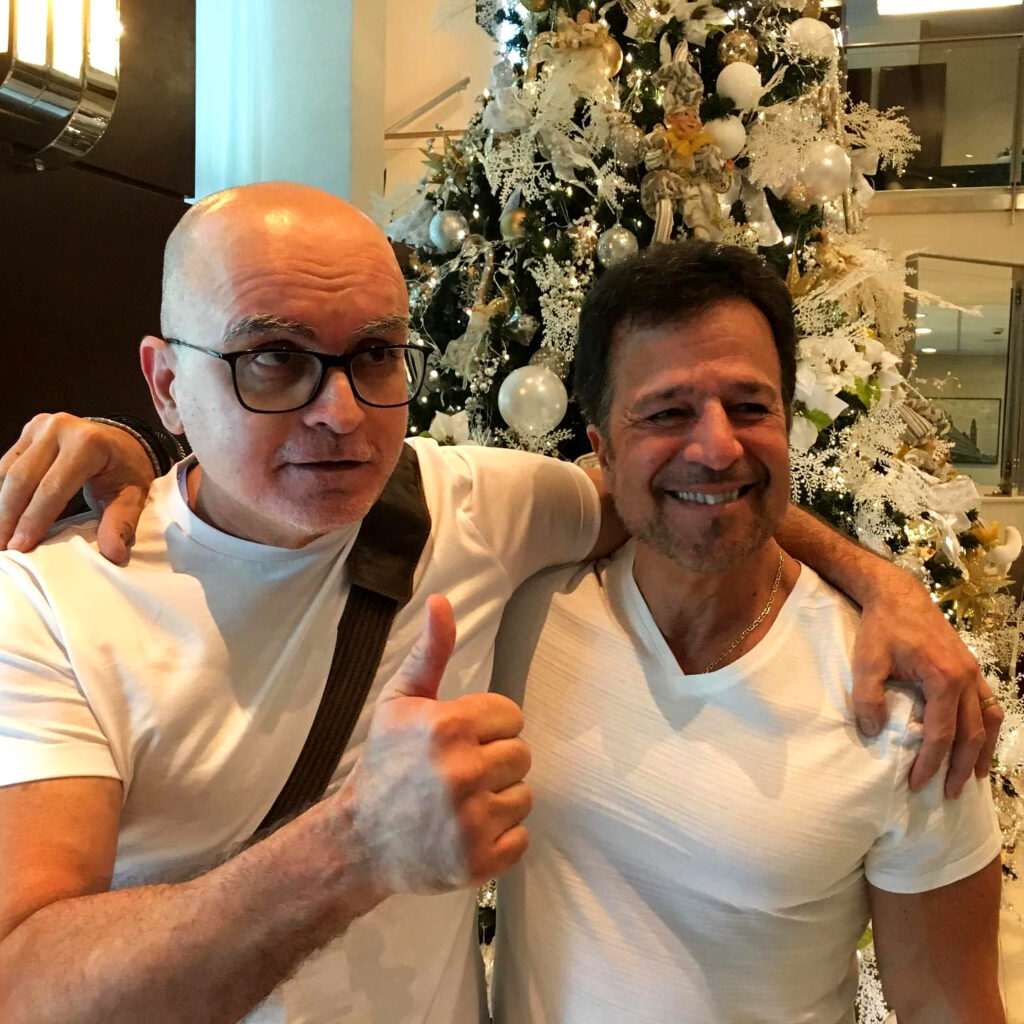
I felt like an incidental stalker! (laughs) Like, I gotta find out what he’s going to do so I can prepare myself for that title when he leaves it? Was that a coincidence? So it got me thinking what the hell is going on? Nah, just joking. But the thing is Axel Alonso loves JRJr and loves me too; that’s the reason – he works with whom he really likes. C.B. Cebulski is a good editor for these new times, but I thought it was a pity when he left the company (in November 2017). He’s the perfect editor; the best of all in the history of comic book publishing, in my opinion.
Why do you think he left the company? Out of his own volition or got fired?
To this day, I don’t know. What I do know is that we exchanged some e-mails the day before the announcement; so I don’t know how it happened. I asked him later, but got no answer; I didn’t insist on knowing and left him be, because I respect him a lot. He decided to move forward and created a new publishing company – AWA Studios – so he doesn’t have to prove anything to anybody nowadays.
Switching gears – How was, in detail, the process of landing The Amazing Spider-Man job with Straczynski?
Through Axel Alonso himself. He found my work on Hulk was really good, and got a great response. He thought I was ready for something bigger, that could sell more. But in my mind, I had to prove myself even harder due to my fall in the 90s. Editors forget fast – and they also forget that I can venture into different styles. Axel believed it was time for me to do something more, and because of that, I decided to go for a brighter and lighter style. As I had come from a successful run on Hulk, I presumed Straczynski knew it, and I was right. Despite what I did in the second issue, I’ve been told he liked how I drew Spider-Man (ASM #510 – Sep. 2004).
And what was that?
Because when I got the script, I drew Peter’s bedroom full of Witches posters.
Then, when I got the script of the next issue (ASM #511 – Aug. 2004), he described Peter’s bedroom in rich detail: reasserting that in Peter’s bedroom there were no Witches posters whatsoever. And then I never got if it was either a joke or if he was really pissed at me! But then Axel told me later he was okay with it. JMS liked my art so much that he even invited me later to do Dream Police with him while I was doing Thunderbolts with Warren Ellis – a great writer, but a bit slow, due to the number of projects he has.
So when I was done with my ASM run, he called me through Axel to do Squadron Supreme – everything was ready to go, but his relationship with Marvel had gone sour.
So you were the one who was supposed to take the art duties in the title after Gary Frank?
From issue #8, I believe. I was really excited to do it because he’s a fantastic writer, but then I was reassigned to do an Ultimates Annual,
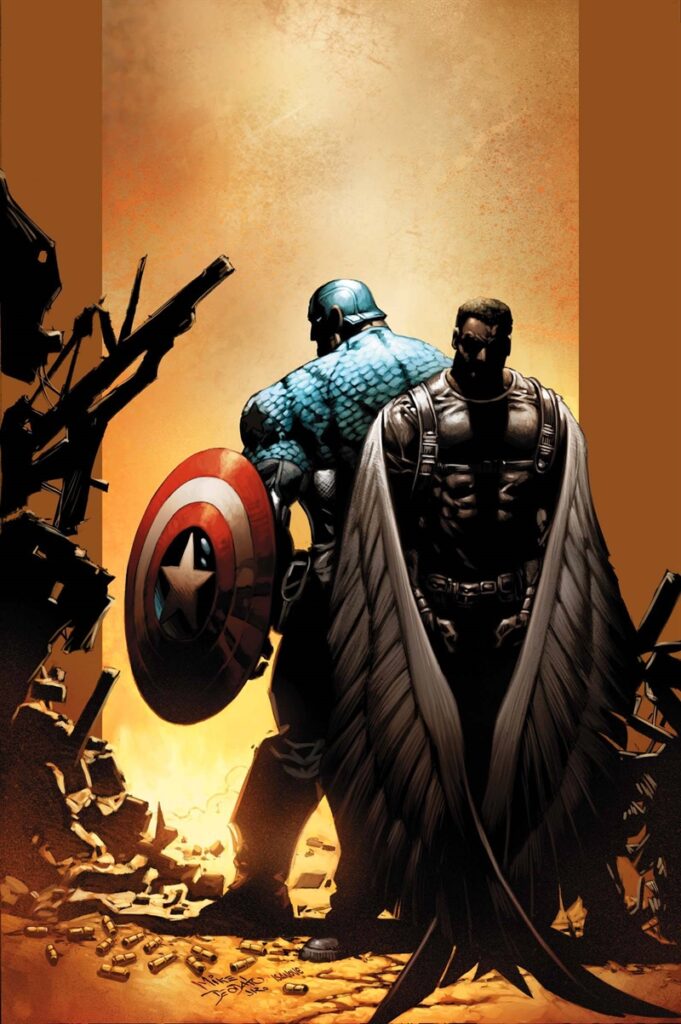
The second issue with Cap and the Falcon, right?
Yeah, good memory!
At least with comics!
So, the issue was written by a novelist, Charlie Huston – great writer! I’ve read all of his work after that. Then, after a while without finding work myself, I got assigned to do four issues with Bendis’ New Avengers. But then came something else: Wolverine Origins…? No – Thunderbolts! Until then I had never actually asked them to do anything specific, but for Wolverine, I did; so they gave me a Wolverine Origins annual to test me alongside Duane Swierczysnki – another great novelist – it was also his first with Wolverine, I think. They liked it a lot and I think I did five issues in the main title. but then Bendis said he liked my work so much that I was given Dark Avengers – just for me! Something fantastic.
But here’s the thing at Marvel: what always worked out was, things came up that I had to do because of the constant change of plans; the editors used to ask me: “Hey, Deo can you do this or that…?” – Despite the stress, I’ve always found a way to things worthwhile with a bang! So my relationship with Marvel has always worked because they always respected me and everybody wanted to work with me too.
Going back to the late ’90s a little: you did work for DC too.
Wonder Woman – from late ’93 to ’94, I did ten issues; #78, then #90-100. And before that, I did a Deathstroke Teen Titans cover and inked a Flash issue. And before finally going back to Marvel I did five issues of Batman during No Man’s Land saga for Shadow of The Bat, Detective Comics, Batman, and a Batgirl annual.
Did you like it?
I loved to do them, but back then I didn’t realize that I had to change and improve my art – the sole reason Marvel. I was just working for money, working so fast without realizing it. At CHAOS! I was getting fewer jobs and less money. I hit rock bottom. So it dawned on me: I had to go back to myself and rediscover my passion for comics. I revisited the fanzines I did and talked to close friends. The strategy was simple: get fewer jobs that would inspire me, thus improving my art. Then DC gave me a job – a Catwoman miniseries, I think; to be edited by the same guy who edited Frank Miller’s Sin City.
Bob Shreck.
That’s it. Nice guy, but not so much. (Laughs).
I won’t ask you why!
But I’ll tell you now anyway! (laughter) According to one of my agents, Bob assigned me the miniseries. When I started working on it, more proposals were coming, I had refused five of them, I think because, as I said, I wanted to focus on that. Then he contacted my agent, saying the Catwoman assignment was not meant for me; my agent got furious and said he passed out many other projects because of that one and Bob doubled down: “Either you give that contract assignment back, or he’ll never work for DC again.” We gave it back, and I ended up doing illustrations for a porn website! Fun, but very easy to lose focus! Just one of many setbacks.
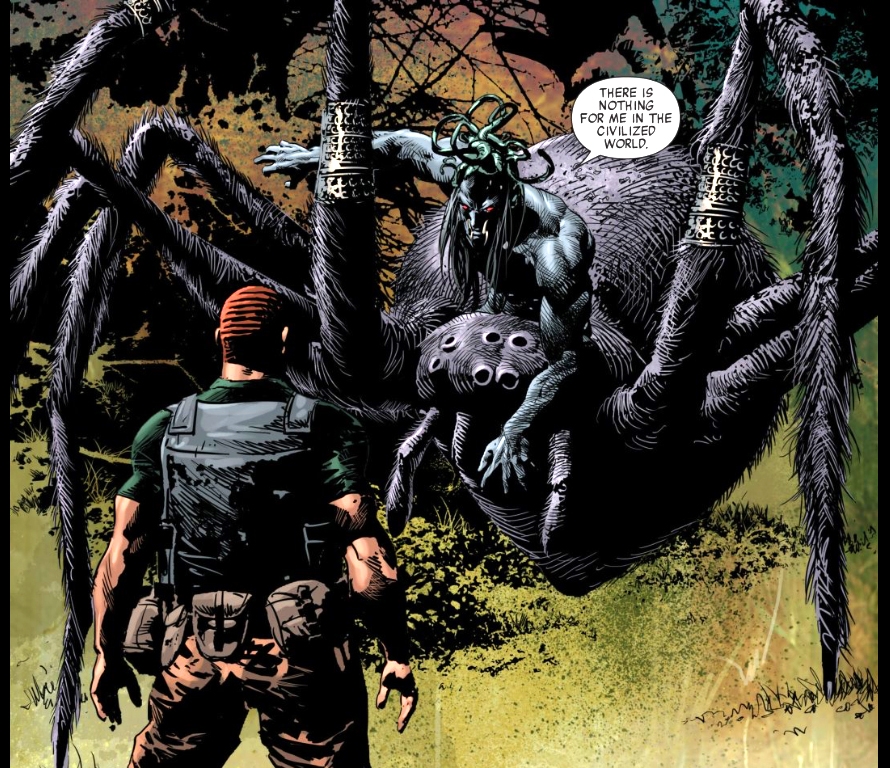
Was that the lowest point of your career?
I guess so. Because I had already made work for the big North American publishers; not that I have anything against that (porn) market, but it was not comics, just illustrations – but I had to do them to keep paying the bills. It brought me back to my beginnings when I was doing Santa Claws for Malibu Comics with very low rates, where I inked some issues for the Protectors for Thomas Derenick, getting U$15 a page – but it was more than the newspapers were paying me in Brazil. Happy about doing that, but sad about being refused by the big ones. A bittersweet feeling, because it was nobody’s fault but my own.
Then I got a chance to do Shanna for Dark Horse. There was an improvement – when I started to do facial likeness, which is now sort of my “specialty”.
With that being said, your Norman Osborn is the true depiction of Tommy Lee Jones.
Yeah! I started infusing photography with what I had learned from my time at Image into my art. It looked interesting, dynamic, and somehow realistic. That led to my next step when I was invited to do Nightcrawler. During that time, when I still had more free time, I discovered the internet. So I started releasing some pin-ups with my new (and improved art) style; I asked for help from my agent to write texts in English to go along with my illustrations and they got noticed. People liked. So I started getting noticed again; Joe Quesada was teasing me. I found it cool. Then, the tragedy of 9/11 happened – it gave me an idea, so I did an illustration for it.
The one with Captain America covering his face in tears?
Exactly, I made the layout but felt bad right afterward for exploiting it, so I shelved the art. Then Marvel decided to release a special issue to give support to the family’s victims. I was asked to collaborate with it and showed them the layout; they liked it and decided to publish it, and even made a poster out of it. I asked them if it was ok to post the art on my website before the issue’s release and they said it was ok. I then asked my agent to write a text on it, and it was very touching – the outcome in Brazil was so good that the best-selling journalistic magazine in the country featured my art and the story behind it in a double-page spread reportage. Never before had my art been seen by so many; it still remains my most famous piece.
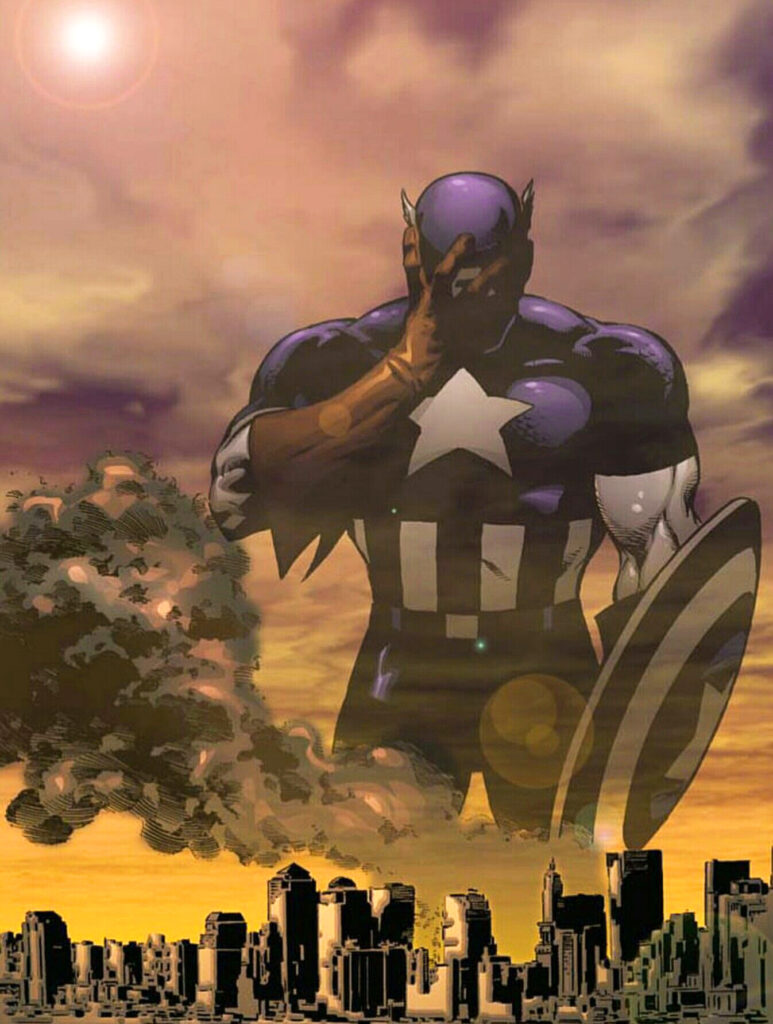
Quite an emotional one.
And all of that led Marvel to notice me again and I could prove my worth in the House of Ideas. And that’s where I stayed for the next twenty-four years until today. During my time there, I’d had bigger and better offers but respectfully refused them because I was feeling at home and being paid fairly.
Offers by whom?
DC. It was a great one, but I’ve made so many great friendships (at Marvel) that I decided to stay; there’s nothing to complain about them. I was even offered Superman and yet I refused because I followed my guts.
Now, it’s time to come to terms with my New Year’s resolution: to do what I want, how I want, and with whom I want and not worry like before about money, because that would eventually come due to the quality of my work. It’s an artistic decision. I’ve decided to leave (Marvel) now because I’m 56 years old, and I have the need to do some creator-owned stuff. I need to create and build my own characters to leave something for my family. I need to have something in this industry that belongs to me. It’s great to work on those legacy characters, but in the end, they belong to the companies and not to myself.
When did you make such a decision?
I was doing Thanos with Jeff Lemire. Then he invited me to do something exclusively with him. And he’s not the kind of guy you say “no” to, because he’s a genius! He then asked me what I wanted to do, and I answered on the spot: a barbarian. (Laughter)
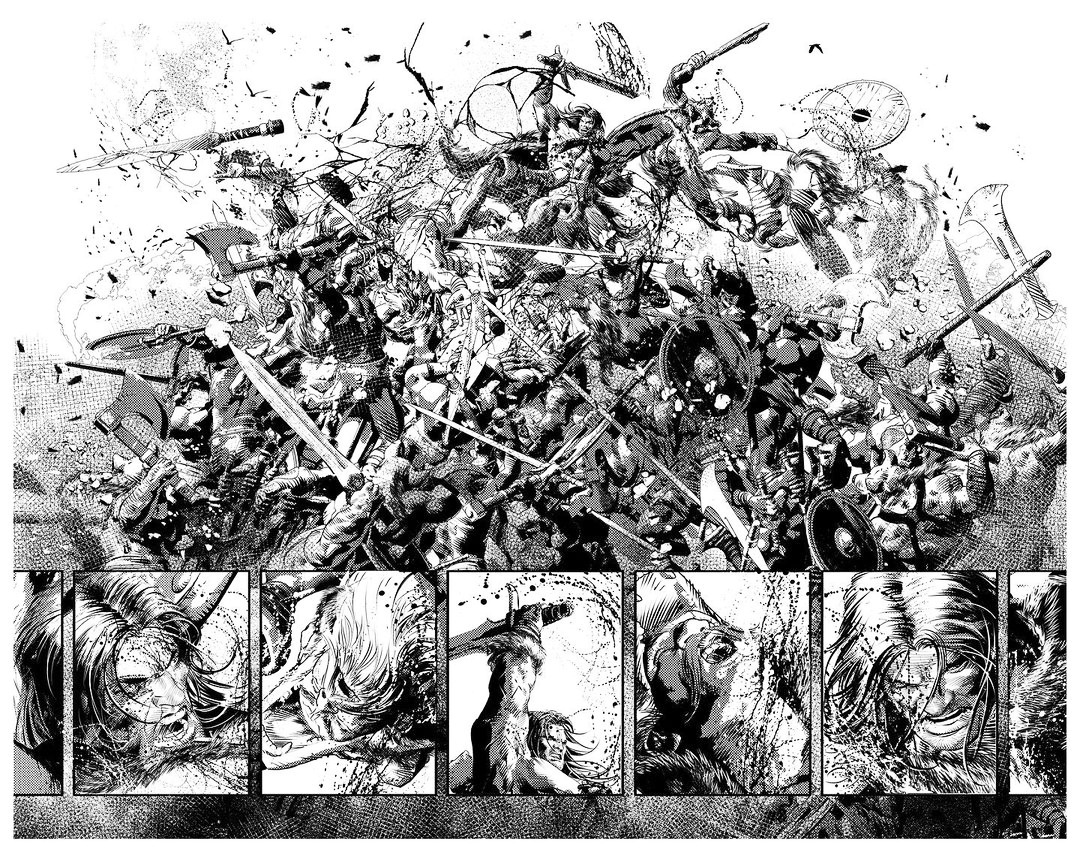
Inspired by what?
Conan, of course! But here’s the thing: Marvel at the time (I was still doing Thanos) didn’t tell anyone that they were renegotiating to get back Conan‘s publishing rights. No one knew – neither Jeff nor I. And I was itching to do something barbaric, something with Conan! People are used to saying that between a writer and an artist, there’s a lot of back-and-forth with the exchange of ideas in a creator-owned book, but that was not the case – Jeff said he would think of something based on my one and sole contribution: barbarian; the rest was all his. Two days later, I get one hundred and fifteen pages of script in my inbox. I say: “Son of bitch of a writing machine!” It was fantastic. Now it’ll be released on August 7th, so I’m promoting it the best I can. It’s a great book, if I may say so. It has the best of worlds in the book: from his part, human interactions, drama, and great characters; from mine, action, fighting, and bloodshed.
One of the things I like the most about your art and body of work is that you, besides being a great artist, you’re one of the few who doesn’t require an inker, due to the visual strength in your style. Why?
Because inkers are nice people… But we want to kill them! (laughter) Well, I had very good ones working with me: I had the opportunity to work with the best, like (Joe) Pimentel on ASM, Oclair Albert in Shanna… In the end, there’s always something that leaves the work different than you expect, looking more like the inker’s style than mine. I, for one, have come to a point where I can do it all by myself. I feel more comfortable like that, but I know that I’ll spend more time working on a page. I wish I could do everything, though: coloring, lettering…
The last time I needed an inker was with ASM, Shanna, that Ultimates Annual… and that’s it. I tried to scan my work using a pencil, but it used to take a lot of time. When I finally learned how to work digitally, the process turned out to be three times faster and still be delivered with quality and proper inking to my taste and style.
Few artists in the media are able to leave their genuine mark on it; the way I see it, your style is like a mix of John Buscema with Neal Adams on steroids.
(Laughter) Thank you so much, it means a lot to me. They’re my idols. This reminds me of the man himself: In the three times I met him, I couldn’t befriend him, try as he might! There he was, the man himself – Neal Adams – wanting to talk about life and personal stuff… But I couldn’t! He’s such a legend and a great artist that I did nothing but gacking and geeking out next to him! It was embarrassing!
Professionally, the first time I worked with him (but not closely) was at Continuity Comics in the ’90s. That was also the only moment in my entire career that I felt nervous doing comics. Never again, because I’d heard through my agents he liked my work. The first time I met him properly was in New York in 2012. Of course, people in the area have already some stories that he can be rude to people for being outspoken. Then I had this great and stupid idea to introduce myself while he was eating. I just approached him and said: “Neal Adams? Mike Deodato!” He jumped out of his chair and hugged me with food in his mouth praising my work! I felt like earning an award for meeting the man. I had then said to my wife how much of a big shot I was because of Neal’s appraisal. He’s such an idol of mine that I just couldn’t be at ease by his side.
Since we’re on Neal Adams, here’s something I’d like you to comment on: he mentioned in an interview that, if a comic book artist has his own “style”, he’s not doing something right. I couldn’t quite right figure that out. Was that a criticism?
I think what he meant was that, as an artist, one could never be stale, stranded in the comfort zone. Maybe that. I mean, he himself has his own dynamic style, but he also moved forward; that remark could also be one amongst many of the controversial others he made regarding the people in the comic book industry – inviting, instigating them to be more, to do more. He was strange in his own way, I don’t know. Possibly a compliment too.
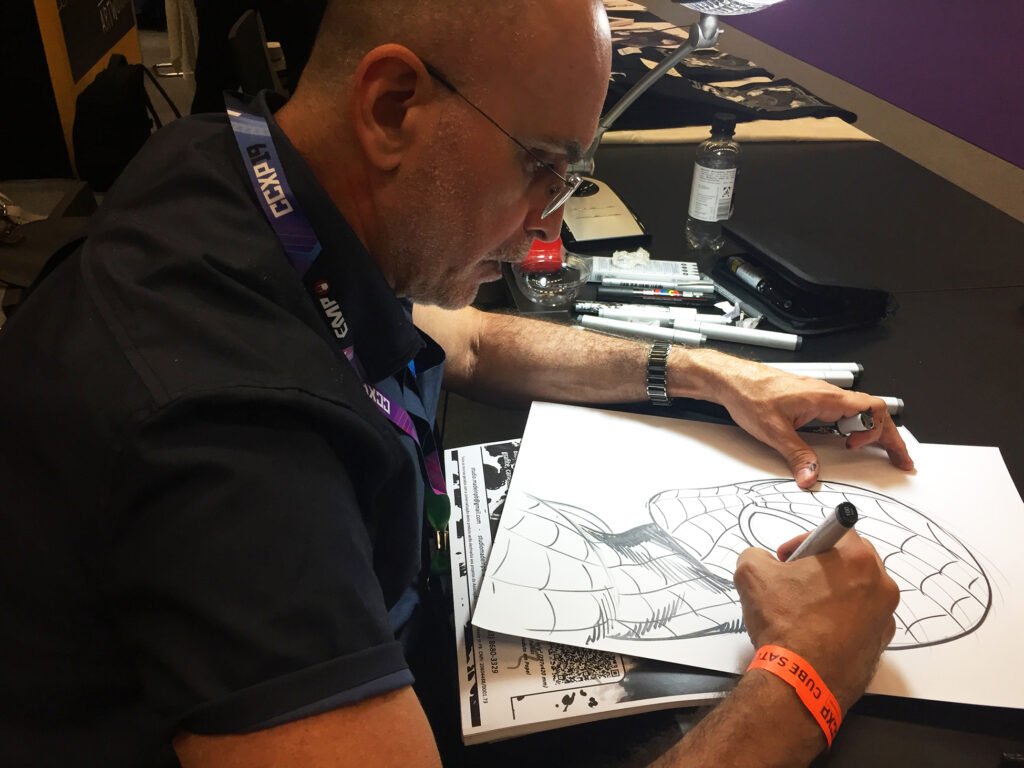
I don’t doubt that; you have evolved in your own way, just like some of the other best artists in the field. Maybe he was referring to the challenge of art itself. Some artists do choose to evolve in order to surpass their limits, to be better, and to do better. There’s this great online documentary about Jack Kirby, in which Barry Windsor-Smith states that, in three decades of professional work, he was always the top artist in the industry, because he simply decided to push himself forward from wherever the trend in the comic book industry was moving forward to.
That brings us to you: Elektra, Wonder Woman, Thunderbolts, Spider-Man, Dark Avengers, New Avengers, and more – in each of those steps you decided to evolve, and not do more of the same as you were back in the ’90s. Some of the new generation of artists from those days couldn’t keep up and became stagnant.
(Long pause) I understand. There are some artists that I don’t want to see a change in their style; Chris Bachalo is one of them. J. Scott Campbell too – and a great guy by the way. They do their thing well and don’t need to break their style to do so. Other Brazilian artists from the 90s got stuck – if not frozen – in time, and I didn’t want that happening to me.
Of course, there are exceptions – take Eduardo Risso for instance; his art is so ahead, so evolved in the way he breaks the page and arranges the panels… I tried to break his “code” as I do with any artist that I adore and perceive as a great influence and try to implement it into my own style. I study, practice, and analyze; but with Risso, it’s just too much! Too much negative space, graphic solutions, dark and bright tones. It’s overwhelming.
Agreed. His camera work is brutal. It’s a mix of David Lloyd with Frank Miller in Sin City.
Risso is a genius. I got what I could from him and moved forward. There are other exceptions too, like Hal Foster – from the Tarzan newspaper dailies to the Prince Valiant graphic novels; that doesn’t need any change that’s awesome! Different from Alex Raymond whose art in the beginning was an explosion of creativity with lots of visual distortion, and deformed figures – unique; but his art became too beautiful and well-behaved, thus lifeless at the end – like he did with Rip Kirby and the Flash Gordon dailies. Burne Hogarth is another one who evolved tremendously in quantic leaps. In terms of illustration and not storytelling, he was great.
So yeah, even the geniuses evolved to a point where they didn’t need to do more. Will Eisner is another who leaped fantastically in his art professionally and became a genius of the craft, but unfortunately got the acknowledgment a little late, twenty years later. With that being said, I’m glad that you see that in me – in my art – because I feel the necessity to always learn.
That reminds me of a girl artist whose art I “discovered” – I say “girl” because she looks very young – Valeria Burzo. She’s Italian and her noir work is a mix of Alex Raymond with Alex Toth; impressive; check her out on Instagram if you can. That inspires me, just like Eduardo Risso. Frank Quitely is another who drops my jaw, with the weirdest alien lifeforms even conceived in comics and human body postures that can evoke and convey so many different emotions, regardless of how small the bodies are on the page; not to mention his negative space that I can’t make it in my art. I have to put elements around.
His light sources are everywhere. And not in a wrong way; that gives him enough space to make the smallest of elements pop out in a single square.
All-Star Superman #1 – that sequence where he’s flying close to the ground next to a truck; the fight sequences in The Authority. Bryan Hitch’s cinematographic sequences in The Ultimates. All these things inspire me so much and make me realize that there’s yet so much I´ve still to learn.
It’s great to learn about how the old school of comics can and will always be regarded as the school for any (new) artist in the field. And what was the Deodato school? What was the artist, the comic that made you look at yourself and say “Wow, I wanna do that for a living?”
There are many… My Father raised me with comics; being a comic collector himself, he introduced me to Hal Foster and Alex Raymond, explaining to me why they were good; I had full access to his collection of comics with fantastic artists… All that was classic and good in comics, I got to know about. Another one that really marked me for life is 5 for The Infinite, by Esteban Maroto – whose style is in mine to this day. 3000 Years Later – The graphic album that I did with my father in 1983 is Maroto all the way with many other influences, including from artists published in the Heavy Metal Magazine. At that time, I also saw Neal Adams’ Batman, and Deadman, which is fantastic; Dick Giordano’s inking on Adams’ pencils taught me a lot too and I’ll be copying that inking style for the rest of my life, but we’ve covered that already. Will Eisner goes without saying: he influenced my father; so when I worked with him for ten years (my father would write and I would draw), I noticed Eisner’s traits right there in my father’s breakdowns. I thought I could “modernize” them in my naivety, thinking back that I already knew everything… What I hadn’t realized is that I was having proper sequential art schooling – with a touch of Will Eisner! I learned so many tools regarding timing, framing, and human form… My Father was a genius, man. If he had had the opportunities I had, he’d be a Frank Miller. But there’s also Sal Buscema – his work changed my life forever in The Avengers and Captain America. His body posing and storytelling are… There are no words.
If you look at all my body of work, you can notice that I slowly dropped the modern style (of the 90’s) and stopped fighting against the classic influences that made me the artist; I surrendered. I’d looked back at all of those creators and realized: “My God, these are really great!” There are some ninja stories I did in the 80s that are purely Eisner-influenced. Later, (Jim) Steranko came to my attention with his black & white, Paul Gulacy – heavily influenced by Steranko, Frank Frazetta, Berni Wrightson – a Frazetta disciple… All the gang from Warren Publishing Comics… Maroto was there, and José Ortiz using his thumb to create an awesome fog effect. The Heavy Metal Magazine in the early issues, when they were publishing originals from Metal Hurlant with Moebius‘ art in it. Such an experience of styles made me the artist I am today… It’s too much stuff – I’m old, man! We can be here talking comics until this convention is over! (laughter)
What was your first contact with Spider-Man?
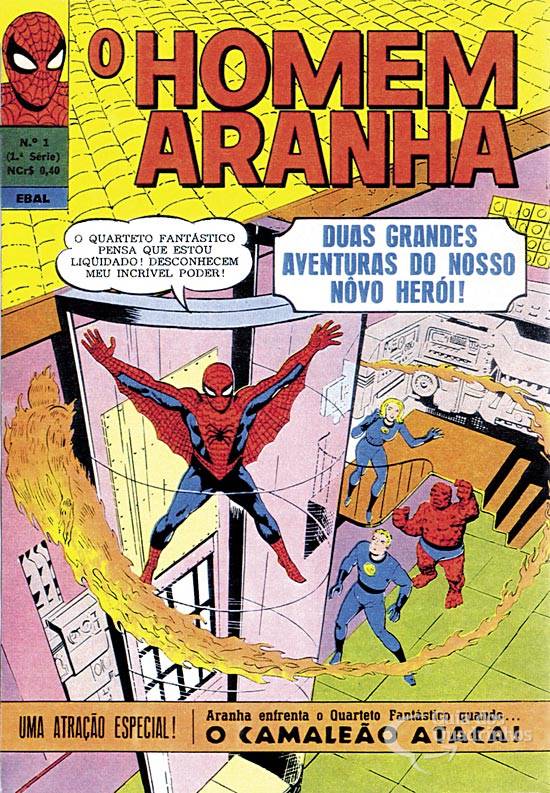
It might have been through Ebal’s* 1st issue, in black and white reprinting Ditko’s phase. At the time, the character didn’t appeal much to me because I found him so thin! Now I know that before doing Spider-Man, his work in the ’50s with science fiction and terror was artistically great. When you look at his work on Spider-Man it’s easy to notice he was going shy and very economical in his style; I hadn’t realized that then because I was young. Later on, he unleashed himself which, for me, is the best Spider-Man story ever made: the one he’s under that mountain of wreckage trying to free himself and save Aunt May (ASM #34). That whole sequence is a Ditko and Lee masterpiece; absolutely fantastic. It moved me. And then, of course, came John Romita Sr. and Gil Kane – also fantastic in their work! And I read it all in Black and White, mind you! But I loved it! I remember some of his team-ups, and they were great, I believe published in some special editions in color, drawn by Romita Sr. with Frank Giacoia’s inks.
*NOTE: The first Spider-Man magazine in Brazil was published by EBAL, the first Brazilian publisher to present Marvel heroes. The series lasted 70 issues, published between April 1969 and January 1975. The series was published in American format (18 cm x 26 cm) and printed in black and white.)
And then Ross Andru with Mike Esposito.
I’ve never liked Ross Andru’s art; I don’t understand why. I liked his work in Superman vs. Spider-Man, though because there was a lot of input from Neal Adams and many others.
I find it interesting that Alex Ross finds (Ross) Andru a genius; why don’t you?
I don’t know, man… I understand and appreciate his art, it’s good that many people like his work. But to me, his art just doesn’t work; his (body) figures are clumsy and stiff. It bothers me. So his work on Superman vs. Spider-Man only functions due to Adams’ inking and correction. I don’t enjoy his art, but then again, it’s all a matter of taste. To me, Spider-Man is John Romita Sr., Gil Kane, Steve Ditko, and John Romita Jr. when he started out in the character.
Which brings us back to what we talked about regarding the evolution of a comic book artist; JRJr had different phases – as his art evolved – in the character: Early 80s when he started out, mid-80s with Roger Stern, late ’90s with Howard Mackie and following with Straczynski in the late 00s, inked by Scott Hanna – my personal favorite (run).
I liked his work in the 90s when his art was all about the big bulky characters. That’s his best work for my taste. Another example: Frank Miller. His work now is very caricatured, which appeases some people. For me, his best work was in Sin City – that is perfection. Adam Kubert too; love his work. His peak for me is Wolverine #90 (vol. 2) – with the unfolding pages… That is a masterclass in storytelling, human figures, shadows… that’s his peak. To each, their own favorite.
But I hate when people come to me and refer to my past work as my peak – screw you, my peak is now! (Laughter)
What was your experience with J. Michael Straczynski before you worked with him? Have you already read some of his work?
I confess that had I read nothing from him until then. Then I learned that different from Bruce Jones who focuses a lot on scenarios and plot details, everything is about the characters – they lead the plot. I felt that difference right away.
How different? Better, worse?
It was a chance for me to work with close-ups, emotions, psychology… Almost like a soap opera – and I don’t mean it negatively. It was a chance to stretch different muscles.
And then… “Sins Past”.
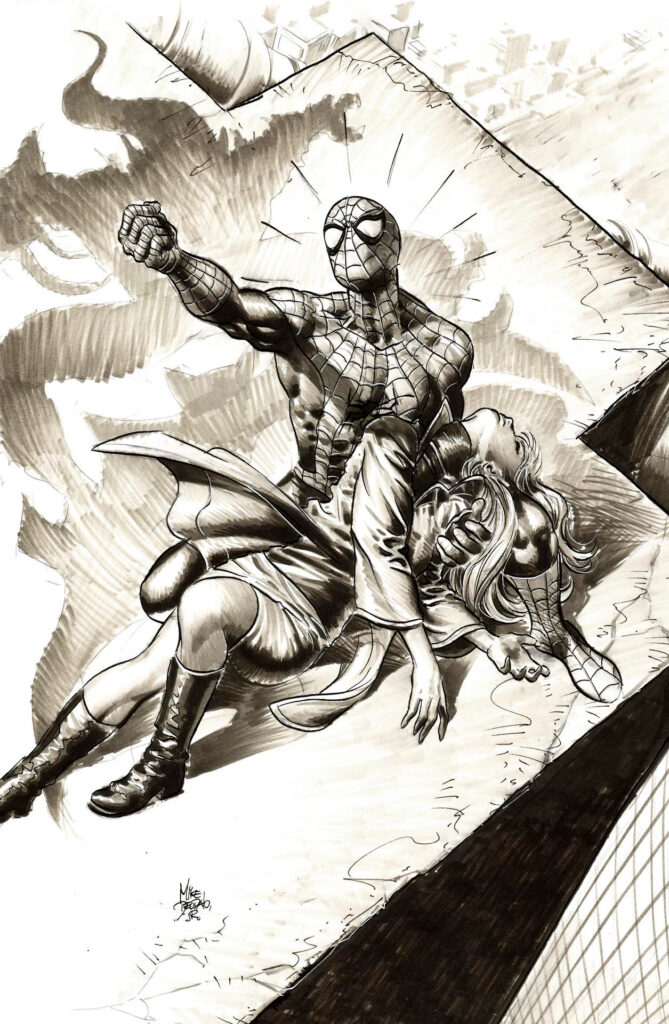
The story came. (pause) I’ve always felt that Gwen was… If you remember during Ditko’s phase, she treated Peter like crap. So her personality was already defined right there and then; that marked me. And as much as I love Romita Sr.’s run in ASM, she didn’t have much “flavor”; of course I was impressed when she died, but I think she was a better character the way she was when first introduced. Nowadays she could be fixed by adding more layers into her personality. Back then, characters had a simpler profile. And regardless of how revolutionary Stan (Lee)’s scripts were, there wasn’t much richness and depth in character development. Bottom line, I was never much of a fan of hers.
So when I learned that her “legacy” would be brought back, and Spider-Man had to pay the bill, I was in; it made sense. But what bothered me was those two brats growing up that fast; it seemed like a solution that I wouldn’t do. But I’m not a genius like Straczynski, so who am I? But I loved doing it – I could explore more of my dramatic side. And the fight scenes came out really good, modesty aside.
It was cool seeing Peter wearing a coat in the cemetery scene. Did you and Straczynski talk to one another during the production of the story, or everything happened through Axel Alonso?
We didn’t. He’s a Hollywood guy and very busy. He made Babylon 5, so he doesn’t talk to humans. (Laughter) Sorry, JMS! Don’t kick my ass, you’re the man! Besides, my English back then wasn’t so good, so there wasn’t much I could say to him. But I learned through others that he really liked my work. Some of the best pages (and sequences) I’ve ever made are those where he learns the truth about Osborn and Gwen. I enjoyed doing that.
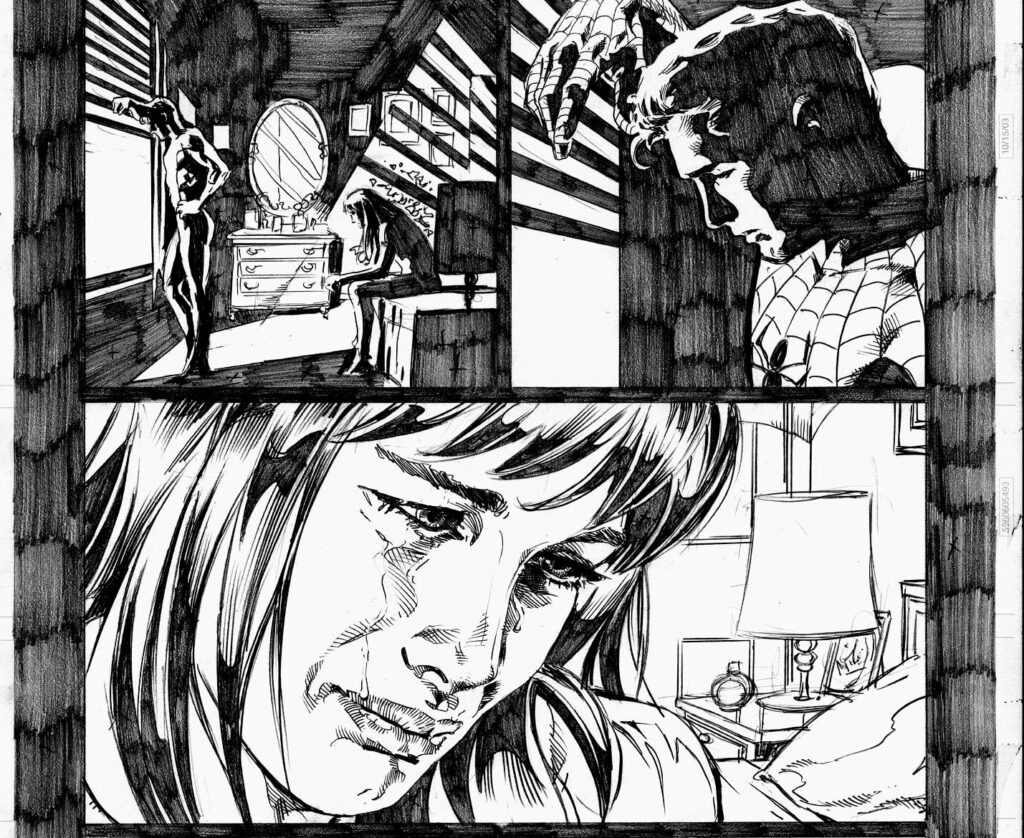
Sheer frustration.
Imagine that – having the love of your life not only having sex with your nemesis but having a baby with him; that’s the ultimate insult and personal attack.
Particularly, I kinda like it, because he (JMS) gave a nice reason as to why Osborn went straight to Gwen for a payback. In your own perspective, what do you think of this arc, what does it represent to you in Spider-Man’s chronological history?
I think it worked. It’s emotional; there’s an undeniable load there to take in, so you get involved in it. So much that, lots of people got really pissed about it. (Laughter) It worked. But really, it’s quite a strange story, especially if done with established characters; bold, to say the least. I wouldn’t have the guts to do it, were I the writer; but I’m glad I was just the artist working for the first time with JMS because people didn’t want to kill me! Who would’ve thought that Gwen was that sassy?!? (more laughs) But at the core, I saw it as a challenge to express myself artistically, without taking sides. All I wanted was to test the boundaries of my art and show why I was there.
After the “Sins Past” arc, then came the “Skin Deep” arc, “The New Avengers”, and “The Other”… Was there a lot of hate regarding your work in “Skin Deep”?
Nothing; nobody complaining at me – just Straczynski dealing with the angry aftermath of “Sins Past”.
Did you get to participate in the talks with Alonso, Quesada, and JMS about it?
I was not there in the backstage while everything was being analyzed. But here’s the thing: Remember when Doctor Octopus took over Spider-Man’s body? Everybody complained about it, but I read the first issue and had a blast with it! Cool idea! Everyone knew that it wouldn’t be forever, but in the meantime, why not enjoy the ride and have fun with it? How can anyone say that “that can’t be done!” Why, if the story is good? It’s entertainment. And Spider-Man is famous for getting screwed up. I thought it was awesome!
Was the editorial happy with your work after the first arc?
Regarding my work, my art, everyone liked it. So much that I stayed in the book. But there were some deadline signals that I noticed for not being fast enough; I wanted to be very good and couldn’t be fast at the same time. So some tricks were made for me to deliver the work on time. For instance, Mark Brooks helped me in the flashback sequences of the “Skin Deep” arc; great artist! I like his covers. I used one of my nephews as a visual reference for the “Molten Kid”; he was my assistant at the time.
Was it your decision or the editor’s to bring Mark in for the flashback sequences?
I left it to the editor. I said I couldn’t make certain deadlines, and let them know the ones I could way beforehand. Since they wanted to keep the release calendar on schedule, for that situation, Mark was brought in – their decision. And it worked. I never miss a deadline. But now that I left Marvel, there was one time (Laughter) that I missed for two days (that’s me punishing myself for it!), but the schedule was very flexible, so nobody got hurt.

On to the “New Avengers” arc; your inker…
I believe since the beginning it was Joe Pimentel; he’s from the state of Pernambuco (Brazil). Excellent inker. That was also an opportunity to go back to The Avengers; I was still ‘stiff’ in that phase in ASM for it, but they (editorial) liked it and decided I was good enough to move to The New Avengers with Brian Bendis after Spider-Man. I was still looking for my interpretation of all the characters there that I liked; great practice. But the one Spider-Man arc that I liked doing more was “The Other” – despite being fragmented (among writers and artists); I enjoy doing everything when it’s self-contained, but there were other (Spider) titles involved, so I couldn’t claim it as “my own story”.
Would you like to have drawn everything in the arc? All the twelve chapters?
I always like doing it all. In that case, with a giant deadline, leave it to me. I like to “own” a story; to be mine! Not a great fan of sharing a story with nobody, nor starting off with a title with advanced numbering. But under a contract, they need it, and I can deliver it, with hopes to be rewarded in the near future with a project that I like.
Why was “The Other” so much special to you?
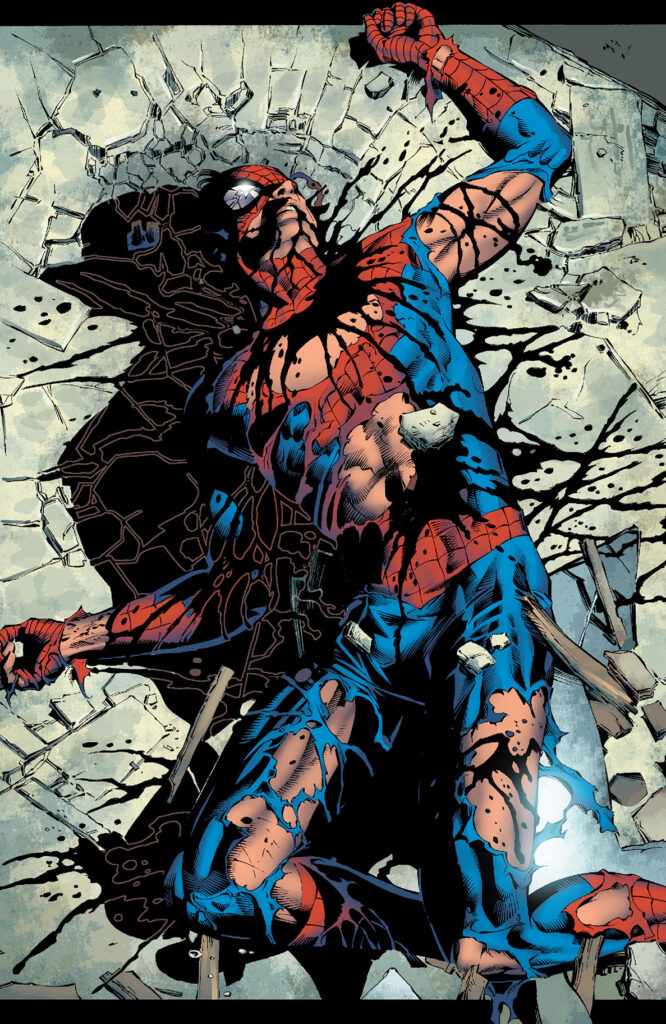
BECAUSE I KILLED SPIDER-MAN. I killed Spider-Man and nobody saw it, man!! “He’s dead, he’s dead!!” (Lots of laughter)
(Through Morlun) I ripped Spidey’s eye off and nobody complained about it; sh*t! (More laughter) Then he came back in a cocoon. But it was interesting… A chance to draw new and different things, like the monstrous version of Spider-man, which goes back to my roots – shadowy, monstrous, sci-fi, horror stuff.
Did you read Straczynski’s first arc on Spider-Man when he approached the character with the totemic elements? Because that actually ends with your story in “The Other” – in it, he finally embraces his Spider/arachnid side and changes himself; he evolves to the point that he could spin webs from his own hands. What did you think of that?
I didn’t read his first stories. I liked the idea though, because it matched the (Sam Raimi) movies. However, my Spider-Man is also the scientist guy who made his own web shooters; I think it’s more human. It’s part of his humanity. New ideas can be good. We know they won’t last long, so we gotta make the most of whatever change happens to see the conflict and watch where the drama goes. And then it all changes again – we all know this.
Most of the stories I make, there isn’t enough time for me to read them. It’s a race. As soon as I’m done with an issue, there comes the next. When I get the synopsis, I check the art of previous issues, put all my references together, and get to work trusting my instincts and experience. And they never failed me.
Good point on references – I’ve already mentioned you using Tommy Lee Jones’s likeness for your Norman Osborn; Tony Stark is modeled after Timothy Dalton, Mary Jane is Liv Tyler, and Detective Lamont is Robert Redford. what about Peter Parker? And where did the idea of pulling real actors’ likeness come from?
He’s that guy from Beverly Hills 90210 – Jason Priestley. And because he is Peter Parker! I want my characters to be more real. Huge influence from Paul Gulacy, when he was doing that in Shang-Chi: Marlon Brando, Steve McQueen, James Coburn, Bruce Lee… I thought it was awesome!!! But then the editors, after talking to some lawyers, asked me to take it easy.
And you used Robert Niro as Mary Jane’s stage director in “Sins Past” (ASM vol. 1, #509).
I had some fun with it, but I was walking on thin ice! I stopped doing that in Marvel, especially when I was doing Dark Avengers; there’s an issue where Norman Osborn is being interviewed throughout twenty panels. I had to change them all because I was told it was just too much of Tommy Lee Jones in every single one. And then I stopped for good; from that point, Osborn became more himself and reminded the actor just a little; I started being more careful. But sometimes when nobody noticed, I’d just put a lot of (real) people there! (Laughter)
Describe what it’s like working with J. Michael Straczynski.
His main thing is… First, you fall in love with his story; I read it and fall in love with it. Then I work with the angle that made me enjoy it so much. Second is the emotion he brings to it; there’s lots of it, which I think might have been the flaw with the (TV series) Sense 8. But that doesn’t fall entirely on him, but I guess the others involved saw that and said “Wow, that’s incredible!” – and multiplied it by four – to the point it became tacky. But (to Straczynski) I say this: I love it! It’s great!
But he’s incredible; the emotion he conveys in each of his scenes… It’s a chance for me (as an artist) to do that as well in the best way possible. I adore his work because of it.
What is Spider-Man to you?
In my mind, he’s the normal kid who’s got super-powers and has fun with it. That’s the imprint in my head as I was growing up with the character. Not the man who got married, for me it’s the poor guy full of debt at university trying to make ends meet; At the same time, he keeps doing the superhero schtick because he likes it. He makes fun of the bad guys! He’s unique because of that.
What is his best uniform to draw? When you were back to the New Avengers with Bendis, you drew his Future Foundation uniform and the classical red and blue.
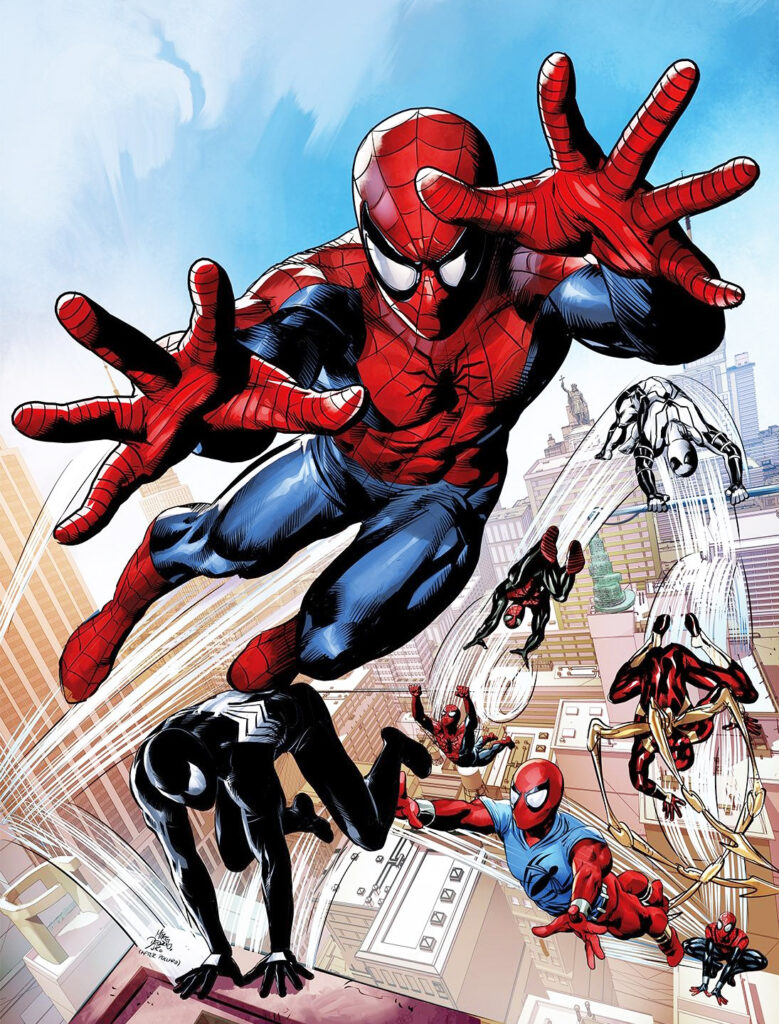
The red and blue is also my main influence, favorite and classic, by Romita Sr.; just like George Tuska’s Iron Man and John Buscema’s Thor. But when it comes to drawing the character… I think Gil Kane’s. It’s just perfect.
Mike Deodato, thank you so much!
Thank you!
